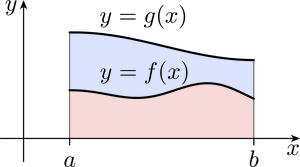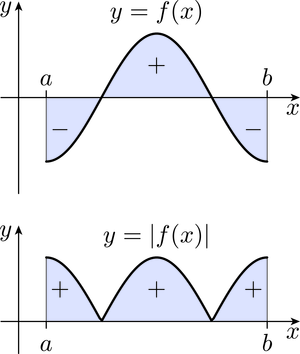1.3 Properties of the Riemann integral
In practice we do not usually calculate integrals by looking at partitions, but instead use a powerful theorem known as the Fundamental Theorem of Calculus, which allows us to think of integration and differentiation as inverse processes.
To state the theorem, we need the notion of a primitive of a continuous real function ; this is a real function that is differentiable on with derivative equal to , that is, the function satisfies , for all . A primitive of a function is not unique, because if is a primitive of , then so is the function with rule , for any constant .
Theorem 2 Fundamental Theorem of Calculus
Let be a continuous function. If is a primitive of , then the Riemann integral of over exists and is given by
We denote by .
For example, a primitive of is , so
which agrees with our earlier calculation using Riemann sums.
The Riemann integral has a number of useful properties.
Theorem 3 Properties of the Riemann integral
Let and be real functions that are continuous on the interval .
a.Sum Rule .
b.Multiple Rule , for .
c.Additivity Rule
d.Substitution Rule If is differentiable on and its derivative is continuous on , and if is continuous on , then
e.Integration by Parts If and are differentiable on and their derivatives and are continuous on , then
f.Monotonicity Inequality If for each , then
g.Modulus Inequality .
The first five properties are probably familiar to you and we have stated them only for reference. The last two inequalities may be less familiar. The Monotonicity Inequality, illustrated in Figure 12, states that if you replace by a greater function , then the integral increases.
The Modulus Inequality, illustrated in Figure 13, says that the modulus of the integral of over (a non-negative number) is less than or equal to the integral of the modulus of over (another non-negative number). If is positive, then these two numbers are equal, but if takes negative values, then at least part of the signed area between and the -axis is negative, so the first number is less than the second.
Exercise 2
Use the Monotonicity Inequality and the fact that
to estimate from above and below.
Answer
Since
it follows from the Monotonicity Inequality that
Hence
that is,
Since and , we see that
(In fact, to two decimal places.)


